The Electricity Workshop set for children: a collection of 22 funny geek tricks
We are quite closely looking at children's electronics, and today we came across a set of "Electricity Workshop." This is something like a mix of those known on the market “Connoisseur” and “Mikronika” on the one hand, but with its own peculiarities.
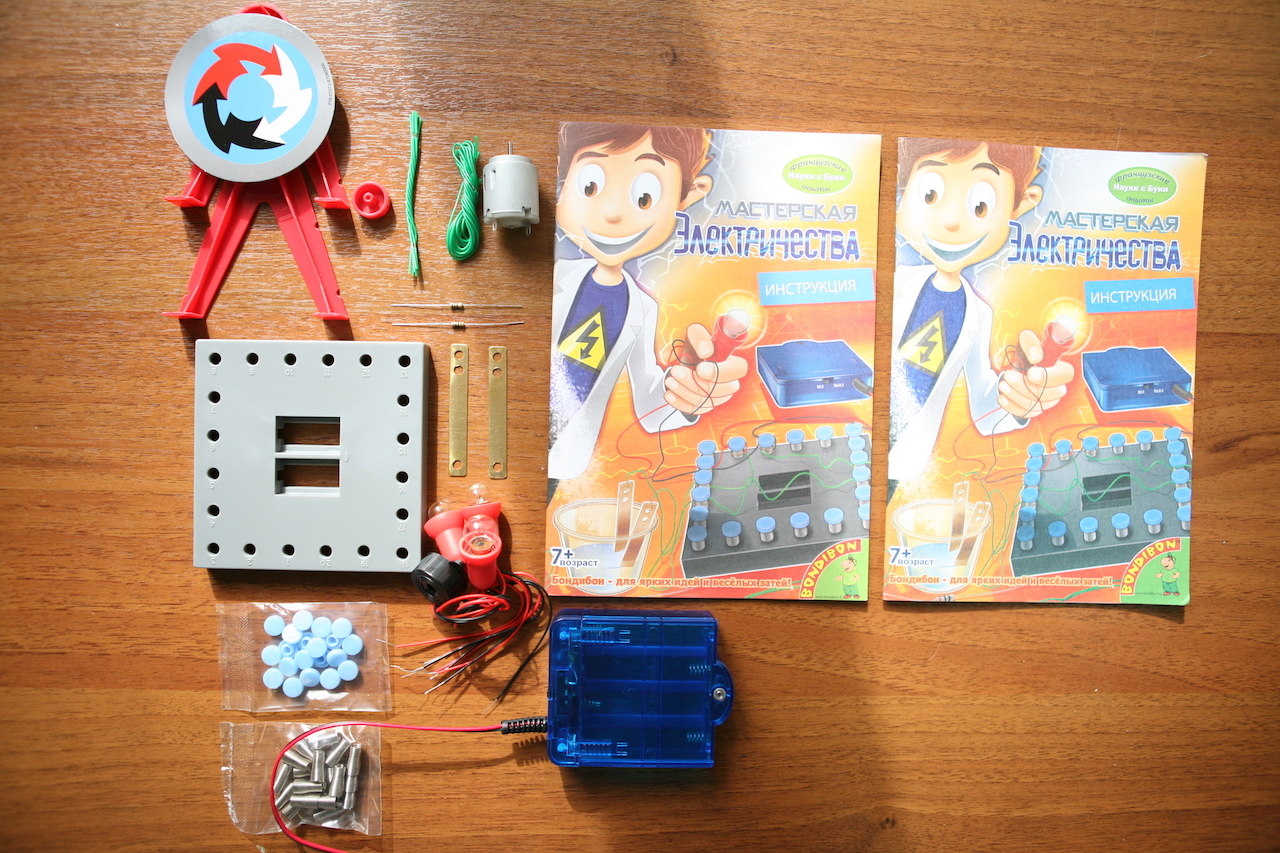
Indeed, we spend a lot of time in search of interesting educational children's gadgets. On the pages of this blog, we have already talked about the board Verve , constructors " Mikronik " and " Expert ".
Then, in the Children's World, we got a curious pen " Kakadu ", and the other day we found the set "Electricity Workshop" .
')
Today we will tell you how it is similar to others and how it stands out from the crowd. To be fair, I must say that this is quite a good synthesis of several children's boards and learning sets: ideas were borrowed not only from the above-mentioned instances of designers, but also from quite popular “boxes”, such as “Natural electricity”, “Potato clocks”, etc. .
The last Chinese “collections” added an interesting, in our opinion, advantage. If “Expert” and “Mikronik” seem to be “peremptory”: you have to do it, sit and do it, otherwise it will not catch fire or squeal, in essence leaving the child with such homework and the question “why?”, Then everything is a little different.

A series of experiments suggests “hooking” on the “Wow” effect, or, in other words, spurring curiosity, and only then explaining some of the processes and phenomena that you need (or useful) to know. For this purpose, it is proposed to use salt water, a pencil or a coin as conductors: in order to broaden the concept of the surrounding world and surprise you with simple things that seem to be always at hand.
This is a classic pedagogical method, when you surprise a student before any topic. For example, you ask whether the noun animated "ball", "racket", - "no". And the "doll"? - "Yes". And ... "Wow," so, is this a toy? And you calmly start the topic "The category of animateness of nouns." It works!
So we are invited to explore the simple, sometimes, perhaps, not the most interesting basics of electricity. For this, the kit offers:
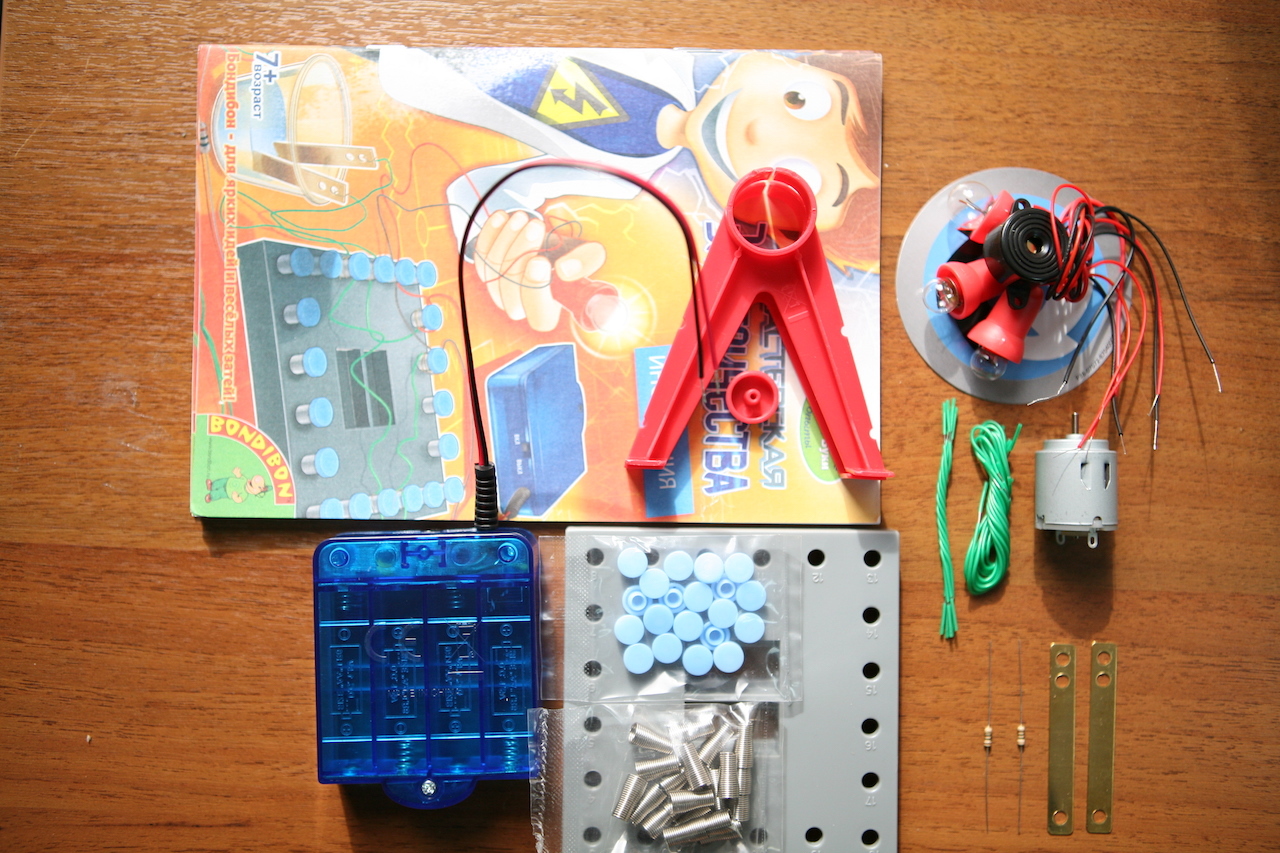
There are two instructions in the set: one text, which explains how to collect some element, what will happen, what will not happen. The second is a set of illustrations for each scheme.

Everything is made up clearly and visually, but it is preceded by a direct description of specific circuits (in this set it is called “Chains”) a short story about what electricity is. Before proceeding to recreate the experiments, you should assemble a panel, or board.

Springs (springs) should be installed along the perimeter of the plastic square, each of which should be covered with a lid: it will act as a kind of handle.
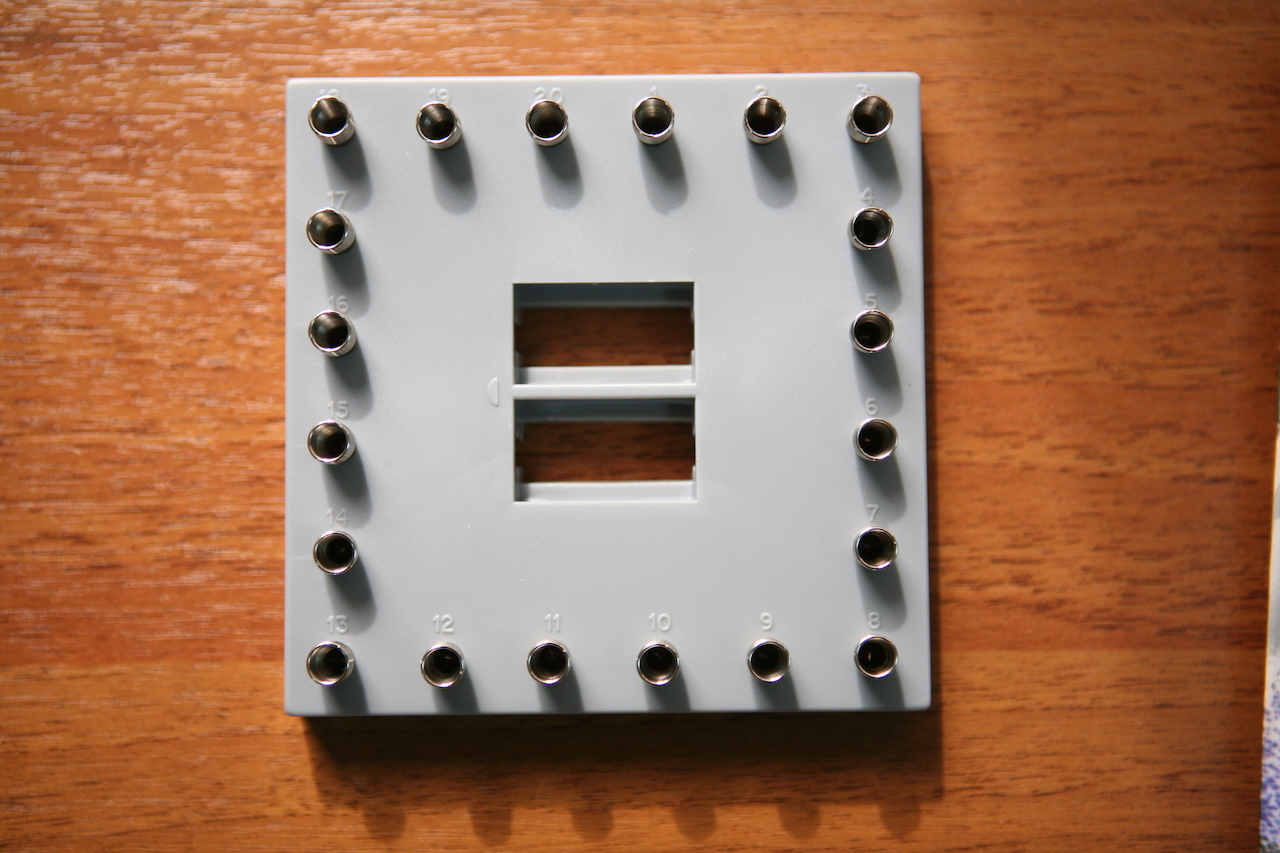
Given that this is a fairly simple device, this solution seemed justified and convenient.

In contrast to the same designer, Mikronik, where the connectors on the board were so close to each other, and the holes themselves were very small, that sometimes a pair of wires was problematic to plug in, and some of them could fly out in awkward motion here everything is different.
You simply pull the handle, the spring expands, and then the wire bites. Simple and reliable.
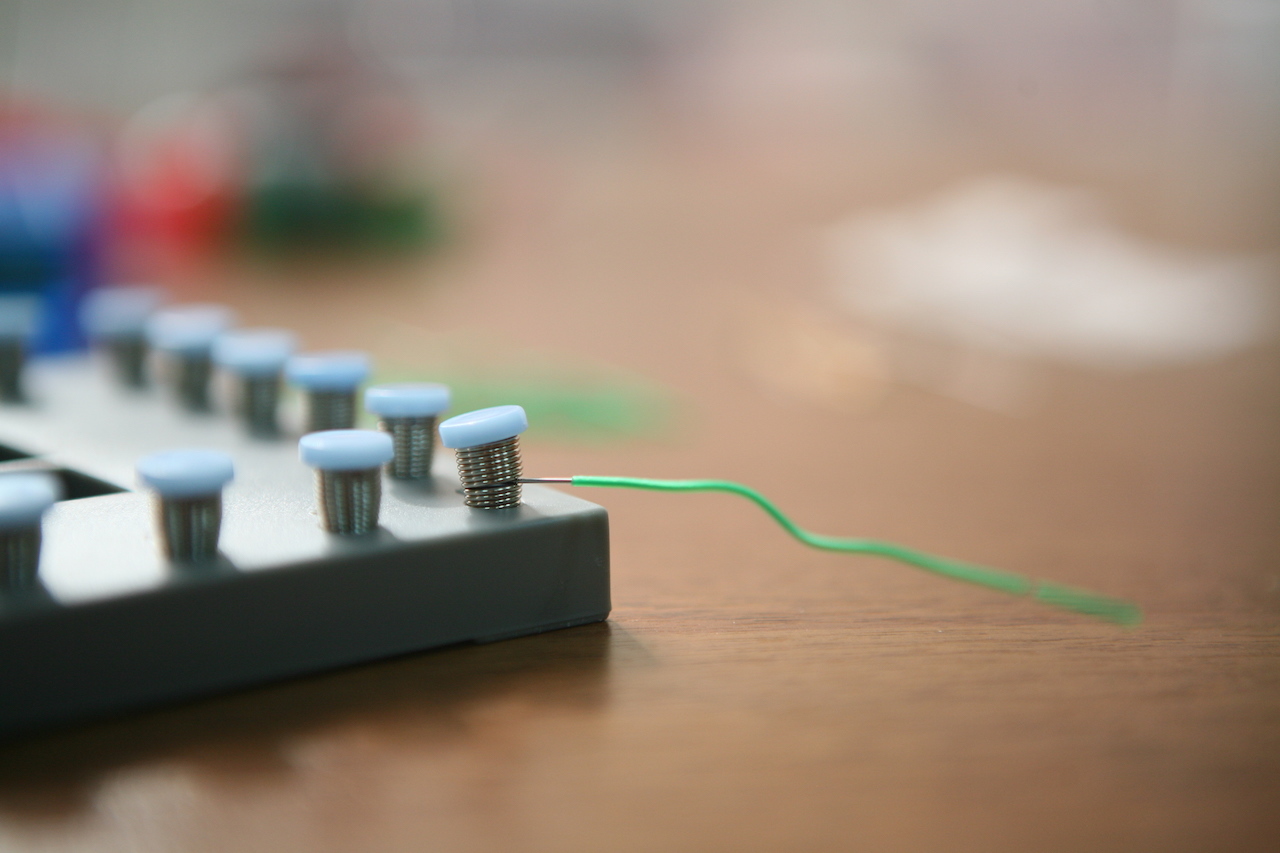
It is proposed to fix some elements to the board immediately: these are light bulbs and a motor. Under the first - a cutout is provided in the center of the square.

The motor is installed using special plastic holders. He will remain near.

Also at the very beginning you need to collect the power source. This will require a screwdriver and 4 "finger-type" batteries ( they do not come with the kit ). After the “platform for experiments” is assembled, the first experiments can be started.

According to the instructions, it is proposed to assemble 22 chains from simple to complex:
The last few experiments are the so-called games in the terminology of the originators. A few experiments suggest the presence at hand of simple things that are not included in the set: a coin, a pencil, water, salt, and some others.
Experiments are provided with descriptions, comments and a kind of test questions that help the child to formulate in simple words why this or that effect occurred. Or did not happen. Such a change of surprise, the gaming component and the learning process should inspire the proposed topic.
Where there is at least some minimal danger, this is clearly indicated in the text instructions, so it is better to use both at once! For example, a warning that "Attention, the resistor will heat up" is not included in the illustrated version!
Methodically, the experiments are designed according to the principle of complexity of the structures. Let's give an example. For a start, it is proposed to simply light a light bulb by connecting the wires.

Further, in an open / closed circuit experiment, it is demonstrated that under certain conditions the lamp does not light when the circuit is not closed.
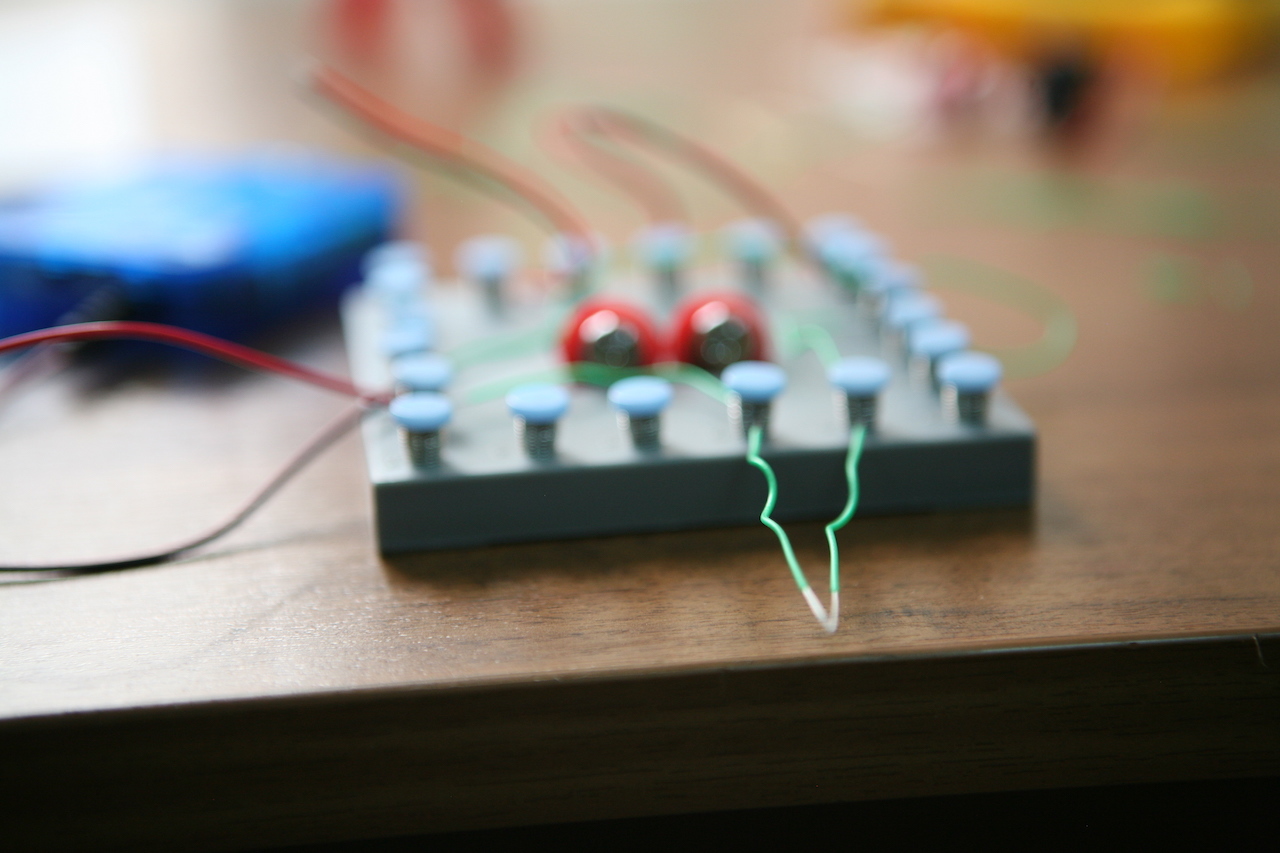
The next step will be asked to connect the wires manually.
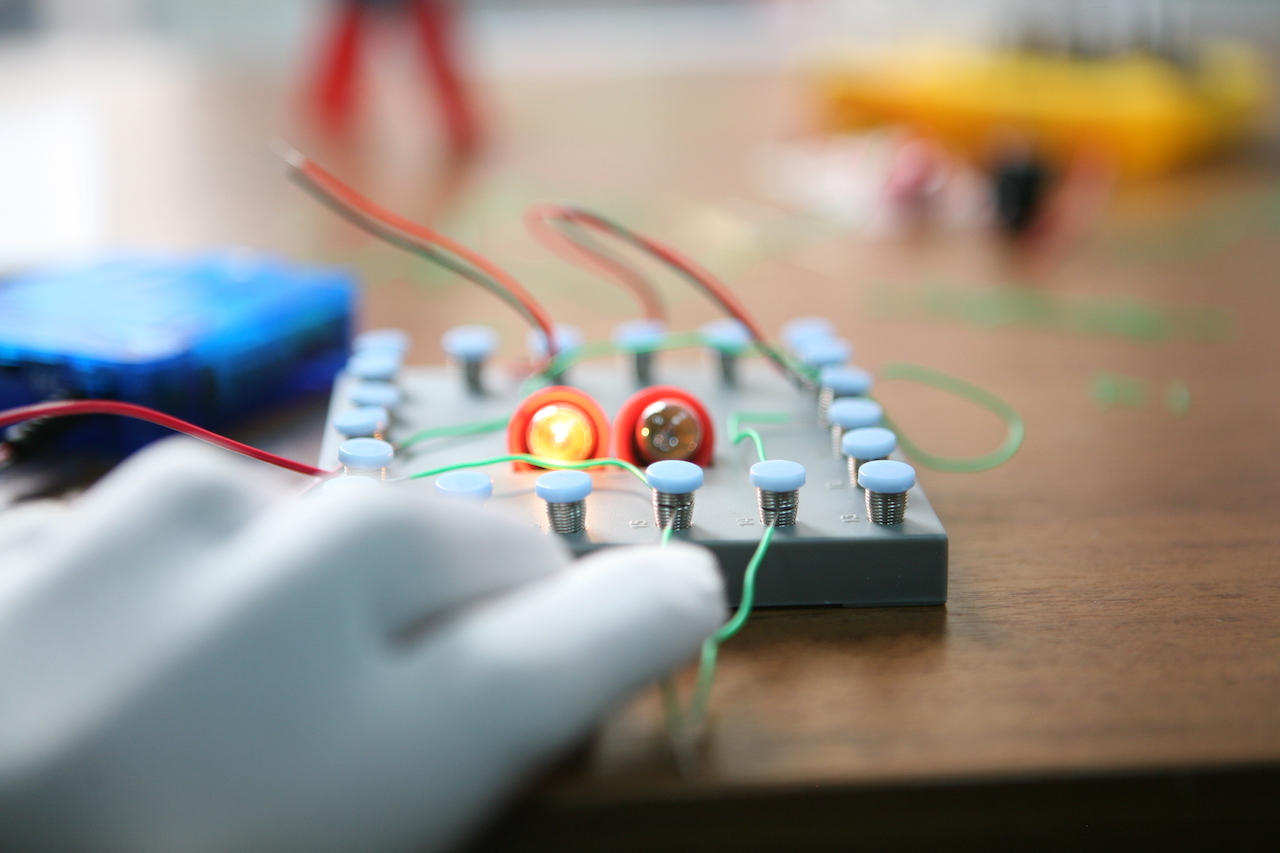
And, finally, to think whether other subjects, less obvious, but so familiar, can become a “closure”: a trick with a coin.
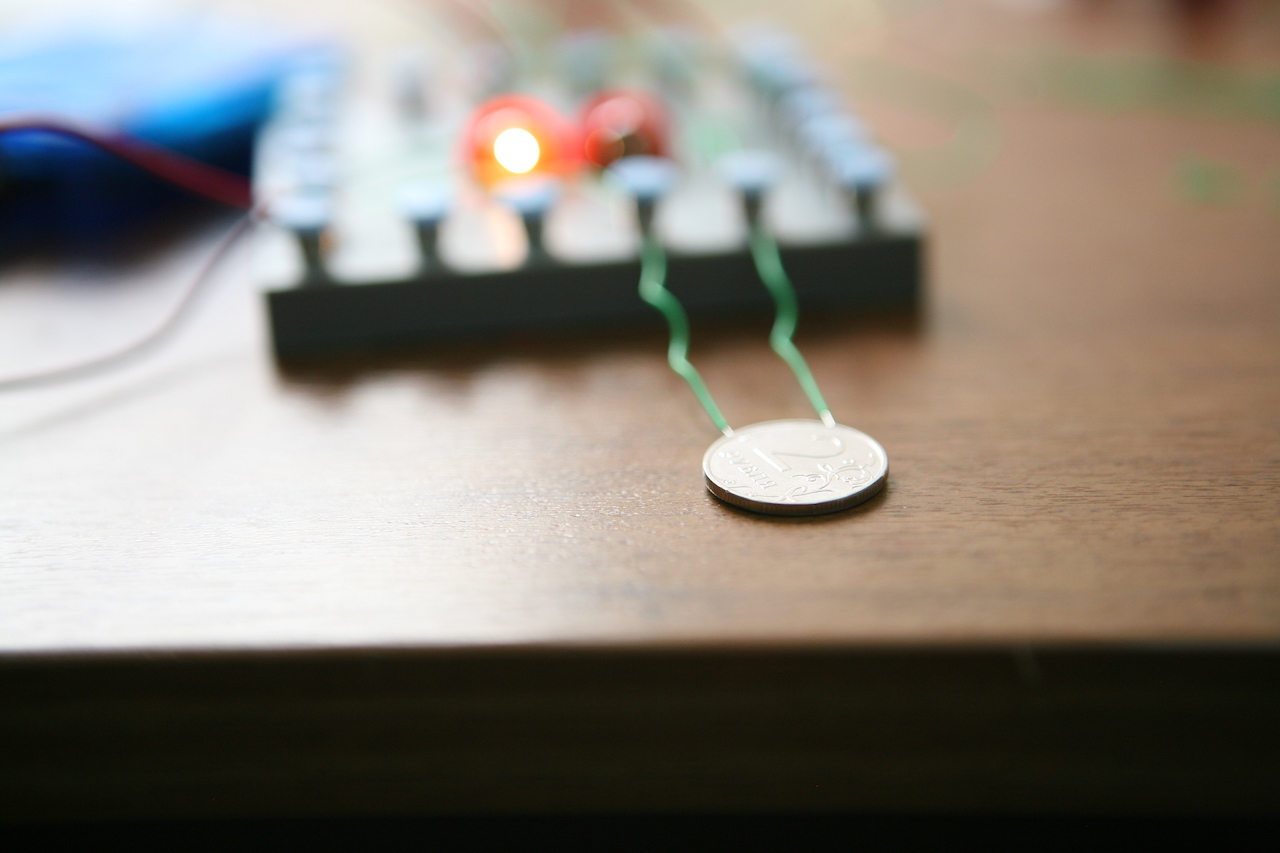
In this case, the child becomes not only an observer of the processes that may not yet be clear to him, but also a participant, a creator, a person who influences what is happening, gradually becoming carried away.
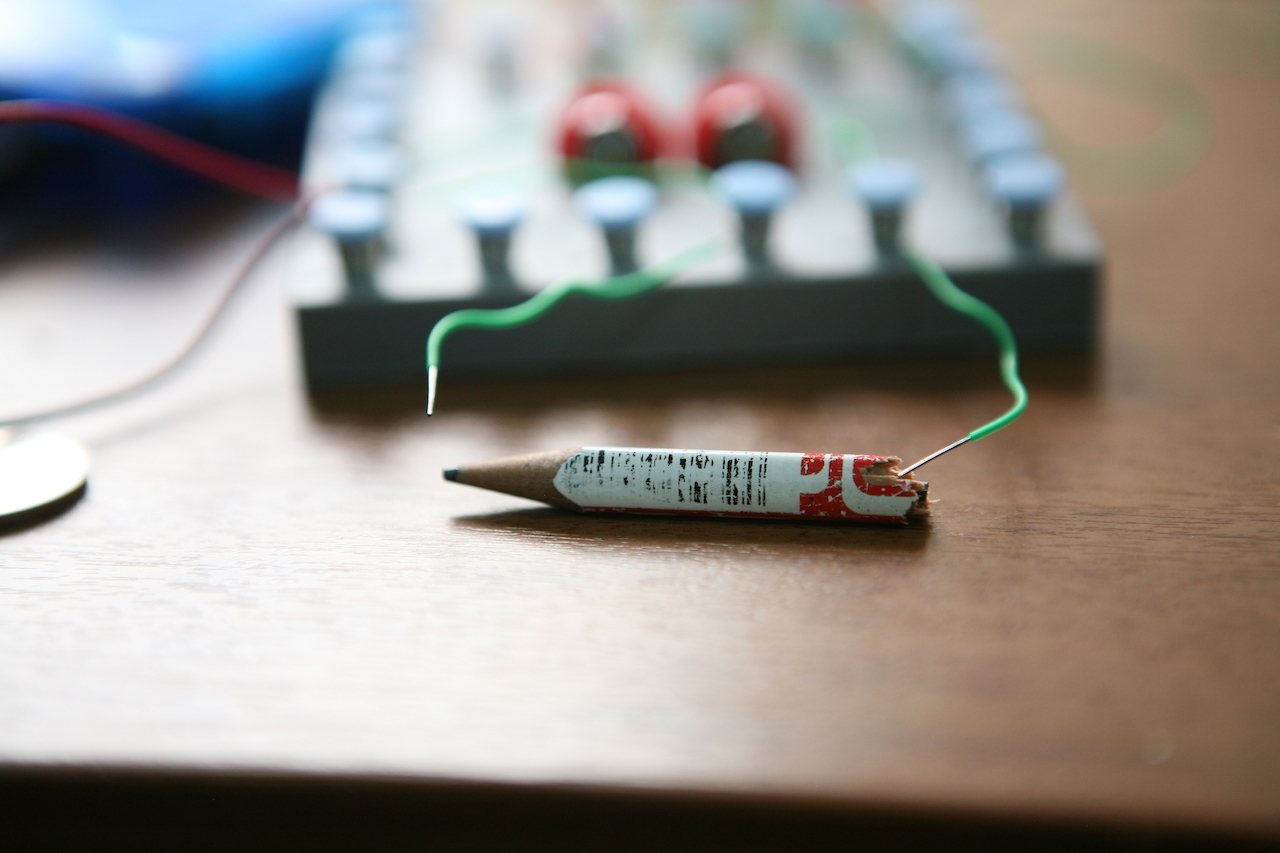
Hey, son, are you drawing with a pencil that has a current?
It is proposed to do such experiments with light, sound and rotation, for which a motor simulating a fan with a cardboard disc is proposed.
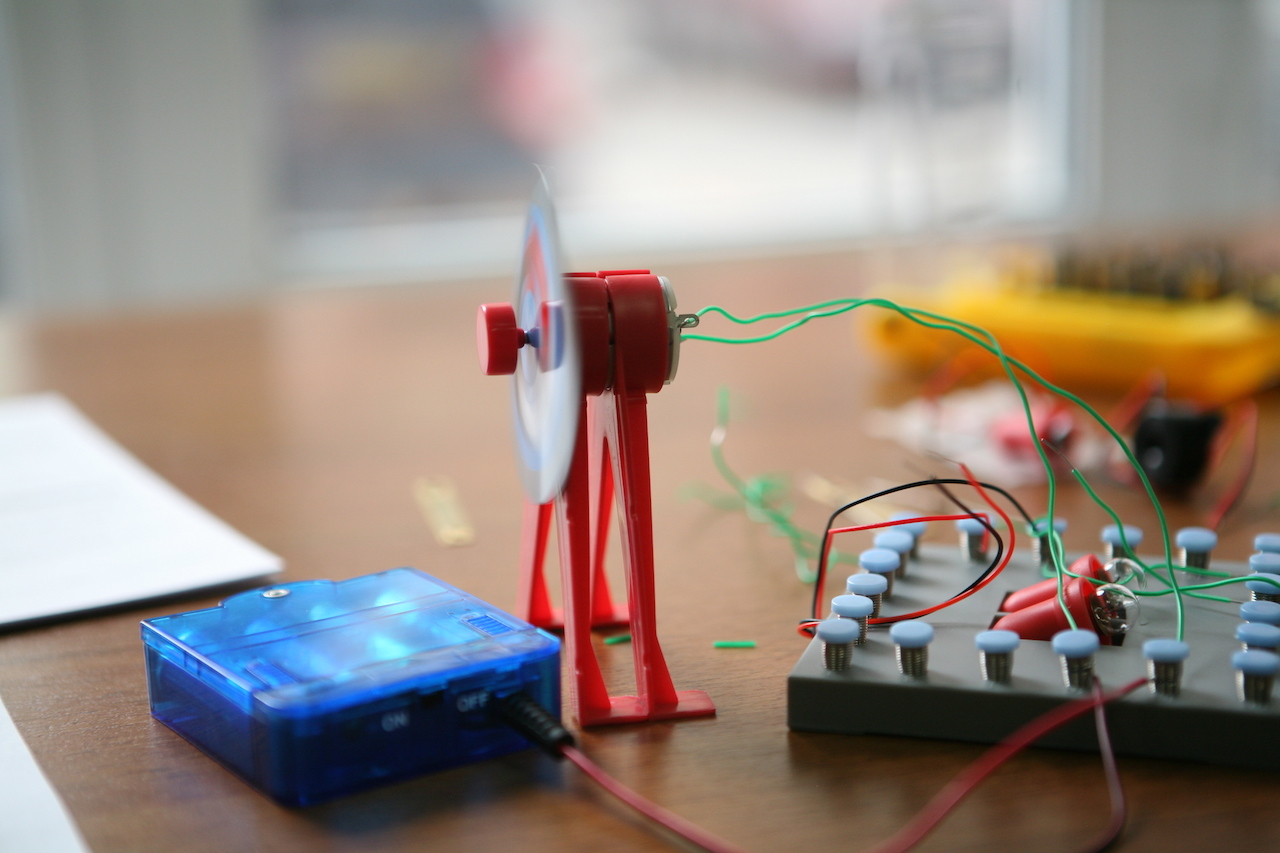
Do you know how mom makes our soup?
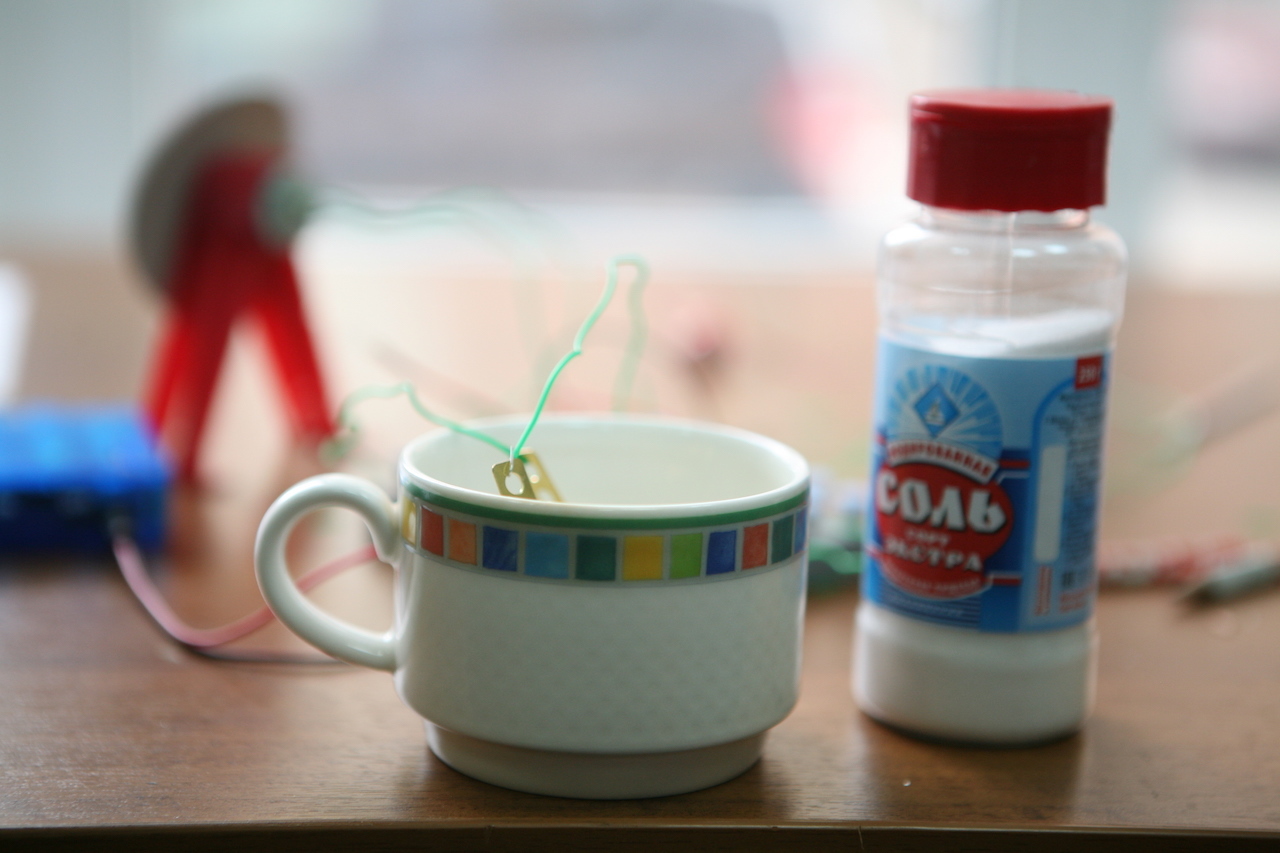
Yes Yes. The simplest water and the most common salt can cause the motor to move, and the lamp to burn. And, if for many adults, this is obvious, then for many children it will sound like a miracle. And bewilderment, delight and desire to understand, as soon as they see it. Therefore, we came up with such a title, about “tricks”, because one of the goals of this set is to surprise and awaken the desire to understand, especially since all this is simply explained.
A few words about picking
Despite the fact that the contents of the kit does not look very rich, and this can be seen in the illustrations, it is packed as a gift, and the box itself is quite capable of generating interest. Yes, of course, craftsmen can collect something similar and independently, but - not everyone. Someone will be easier to take a "turnkey gift" with simple explanations on paper. Instructions and comments in such toys play an important role.
Using
This form seems more visual and gives more freedom of movement for the child, which means he can do most of the work with such a board on his own. Although the recommended age is “7+”, some simple things can also be shown to young children.
Indeed, we spend a lot of time in search of interesting educational children's gadgets. On the pages of this blog, we have already talked about the board Verve , constructors " Mikronik " and " Expert ".
Then, in the Children's World, we got a curious pen " Kakadu ", and the other day we found the set "Electricity Workshop" .
')
Today we will tell you how it is similar to others and how it stands out from the crowd. To be fair, I must say that this is quite a good synthesis of several children's boards and learning sets: ideas were borrowed not only from the above-mentioned instances of designers, but also from quite popular “boxes”, such as “Natural electricity”, “Potato clocks”, etc. .
The last Chinese “collections” added an interesting, in our opinion, advantage. If “Expert” and “Mikronik” seem to be “peremptory”: you have to do it, sit and do it, otherwise it will not catch fire or squeal, in essence leaving the child with such homework and the question “why?”, Then everything is a little different.
A series of experiments suggests “hooking” on the “Wow” effect, or, in other words, spurring curiosity, and only then explaining some of the processes and phenomena that you need (or useful) to know. For this purpose, it is proposed to use salt water, a pencil or a coin as conductors: in order to broaden the concept of the surrounding world and surprise you with simple things that seem to be always at hand.
This is a classic pedagogical method, when you surprise a student before any topic. For example, you ask whether the noun animated "ball", "racket", - "no". And the "doll"? - "Yes". And ... "Wow," so, is this a toy? And you calmly start the topic "The category of animateness of nouns." It works!
So we are invited to explore the simple, sometimes, perhaps, not the most interesting basics of electricity. For this, the kit offers:
- Panel to build (analog board)
- Battery compartment
- Call
- Little motor
- 20 spring (spring)
- 20 spring covers
- Signal lamp
- 2 light bulbs
- 1 cardboard disc
- 2 electrodes
- 2 resistors
- Electric wires
There are two instructions in the set: one text, which explains how to collect some element, what will happen, what will not happen. The second is a set of illustrations for each scheme.
Everything is made up clearly and visually, but it is preceded by a direct description of specific circuits (in this set it is called “Chains”) a short story about what electricity is. Before proceeding to recreate the experiments, you should assemble a panel, or board.
Springs (springs) should be installed along the perimeter of the plastic square, each of which should be covered with a lid: it will act as a kind of handle.
Given that this is a fairly simple device, this solution seemed justified and convenient.
In contrast to the same designer, Mikronik, where the connectors on the board were so close to each other, and the holes themselves were very small, that sometimes a pair of wires was problematic to plug in, and some of them could fly out in awkward motion here everything is different.
You simply pull the handle, the spring expands, and then the wire bites. Simple and reliable.
It is proposed to fix some elements to the board immediately: these are light bulbs and a motor. Under the first - a cutout is provided in the center of the square.
The motor is installed using special plastic holders. He will remain near.
Also at the very beginning you need to collect the power source. This will require a screwdriver and 4 "finger-type" batteries ( they do not come with the kit ). After the “platform for experiments” is assembled, the first experiments can be started.
According to the instructions, it is proposed to assemble 22 chains from simple to complex:
List
- Simple chain
- Open / closed circuit
- Two light bulbs. Parallel connection
- Two light bulbs. Serial connection
- Electric motor
- Verify that the call is working
- Parallel connection of light bulb and motor
- Series connection of the bulb and motor
- Short circuit
- Water and electricity
- Resistors
- Flashing light
- Fast blink
- Alternate movement of the motor
- Alarm warning
- Turning a normal light bulb into a flashing
- Siren
- Electricity production
- We measure reflexes
- Truth or lie
- Domino Game
- Electric domino
The last few experiments are the so-called games in the terminology of the originators. A few experiments suggest the presence at hand of simple things that are not included in the set: a coin, a pencil, water, salt, and some others.
Experiments are provided with descriptions, comments and a kind of test questions that help the child to formulate in simple words why this or that effect occurred. Or did not happen. Such a change of surprise, the gaming component and the learning process should inspire the proposed topic.
Where there is at least some minimal danger, this is clearly indicated in the text instructions, so it is better to use both at once! For example, a warning that "Attention, the resistor will heat up" is not included in the illustrated version!
Methodically, the experiments are designed according to the principle of complexity of the structures. Let's give an example. For a start, it is proposed to simply light a light bulb by connecting the wires.
Further, in an open / closed circuit experiment, it is demonstrated that under certain conditions the lamp does not light when the circuit is not closed.
The next step will be asked to connect the wires manually.
And, finally, to think whether other subjects, less obvious, but so familiar, can become a “closure”: a trick with a coin.
In this case, the child becomes not only an observer of the processes that may not yet be clear to him, but also a participant, a creator, a person who influences what is happening, gradually becoming carried away.
Hey, son, are you drawing with a pencil that has a current?
It is proposed to do such experiments with light, sound and rotation, for which a motor simulating a fan with a cardboard disc is proposed.
Do you know how mom makes our soup?
Yes Yes. The simplest water and the most common salt can cause the motor to move, and the lamp to burn. And, if for many adults, this is obvious, then for many children it will sound like a miracle. And bewilderment, delight and desire to understand, as soon as they see it. Therefore, we came up with such a title, about “tricks”, because one of the goals of this set is to surprise and awaken the desire to understand, especially since all this is simply explained.
A few words about picking
Despite the fact that the contents of the kit does not look very rich, and this can be seen in the illustrations, it is packed as a gift, and the box itself is quite capable of generating interest. Yes, of course, craftsmen can collect something similar and independently, but - not everyone. Someone will be easier to take a "turnkey gift" with simple explanations on paper. Instructions and comments in such toys play an important role.
Using
This form seems more visual and gives more freedom of movement for the child, which means he can do most of the work with such a board on his own. Although the recommended age is “7+”, some simple things can also be shown to young children.
Source: https://habr.com/ru/post/403329/
All Articles